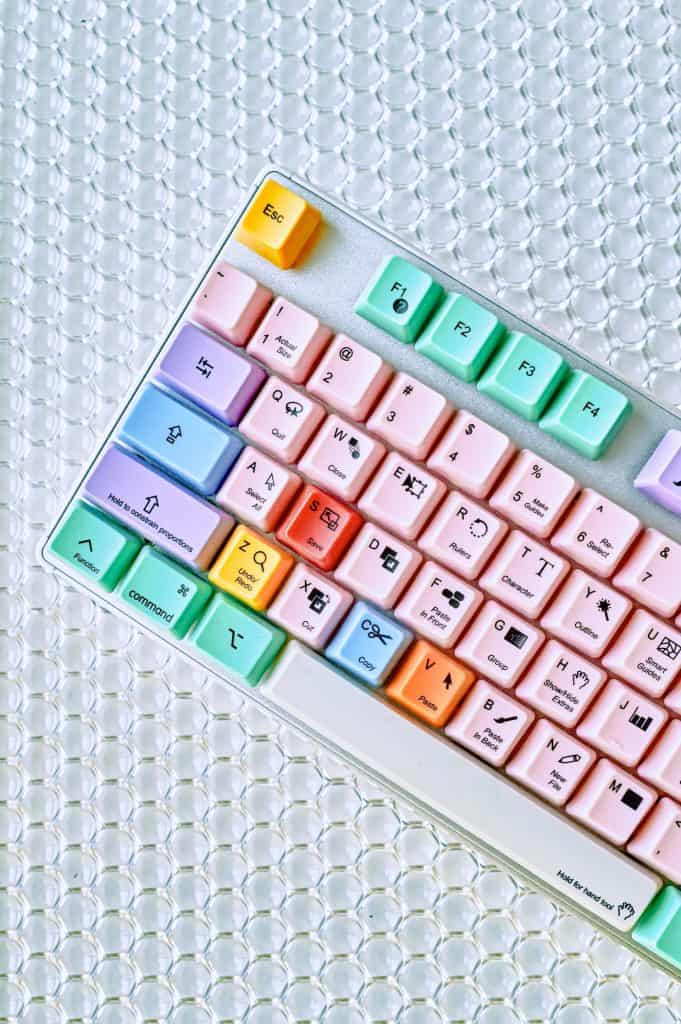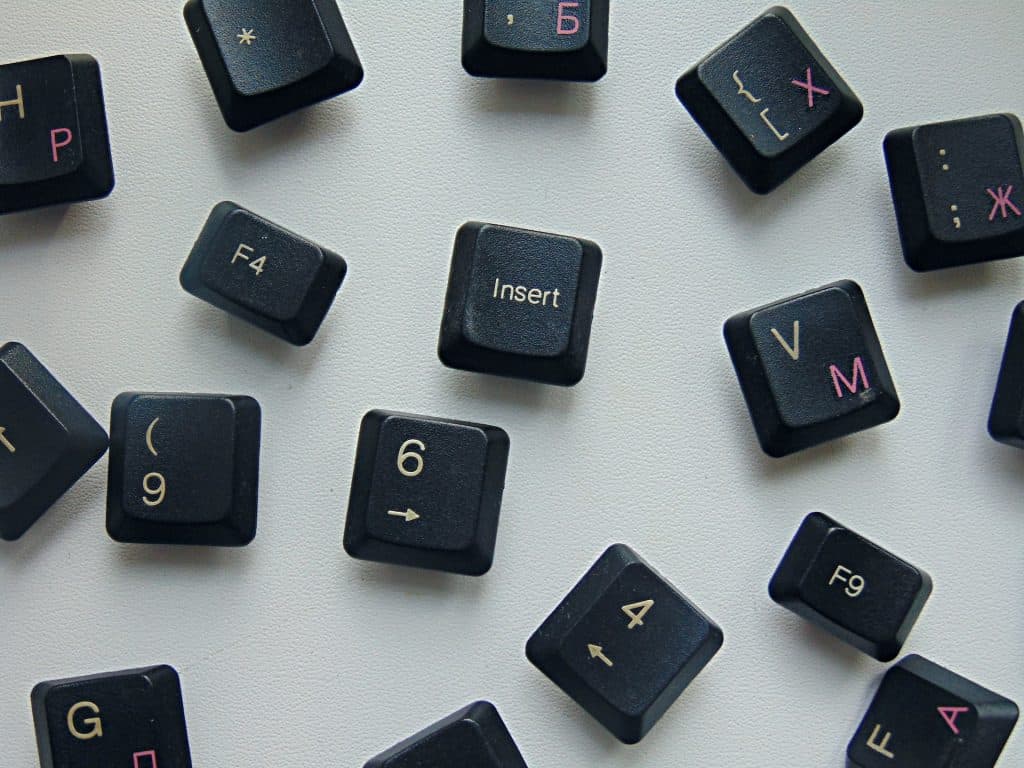You need to lube the switches of your mechanical keyboard and treat it as a hobby to get the best typing performance out of this peripheral device. It might sound like an irksome task, but you can make your keyboard perform much better if you lube it regularly.
In this guide, we will discuss the hows and whys — how to lube switches and why you need to do it. We’ll discuss a few lubes you can use in this regard, and we also threw in some troubleshooting techniques in case any issues arise.
Scroll down to read all about it and get your mechanical keyboard performing at an optimal level. Let’s begin!
How to Lube Switches
Here are the steps:
- You will first need a good lube — you can choose grease-based fluids or oil-based fluids
- To lube switches, you will first have to remove them from the keyboard
- Next, you must take them apart using a screwdriver or a switch removal tool
- It’s a lot easier if you own a hot-swappable keyboard
- You will need to lube the lower housing, spring, stem, and upper housing
- Once you’re done lubing the switches, you must place them back in the keyboard

Types of Keyboard Switches
There are three different types of switches that you will find in a mechanical keyboard. These are tactile switches, clicky switches, and linear switches.
Tactile Switches
These switches come with a tactile bump; you will feel it when you type. However, they produce a pretty good sound if they are not noisy. A cherry-style switch (brown) is an ideal example of this switch.
Clicky Switches
These switches produce a sound that is more fun. It means that they are much noisier than the other two types. A cherry-style switch (blue) is an excellent example of a clicky switch and is quite noisy.
Linear switches
If you want to go for switches that don’t produce noise, you should consider linear switches. Keyboards with these switches are much smoother, and these mechanical keyboards seem more like membrane keyboards.
Types of Keyboard Lubes
There are different types of lubes that you can use for this purpose as long as it is not flammable. These fluids have polyol esters, phosphate esters, and water glycols that assist the keyboard switches in easy movement and prevent any damage.
You have to consider the viscosities of these various fluids. The most popular fluids for this purpose are Krytox 105 oil, Tribosys 3204, Tribosys 3203, and Krytox 205g0. And their numbers tell you how viscous these fluids are.
Primarily, there are two types of lubricants that you should consider:
Grease-Based Fluids
These fluids are ideal for linear switches because they have higher viscosities. You can apply them to spring, stem, housing, and switch parts. These are much thicker and are highly effective for reducing friction.
Oil-Based Fluids
These fluids have lower viscosities than grease-based fluids, and they are ideal for use on the upper surfaces because they can reduce the overall feel factor. They are great for lubing the stem, housing, and other switch parts.
Why Lube Keyboard Switches?
There are various reasons why you need to lube your keyboard switches. Some of the most prominent ones are as follows:
Improved Sound
People go for mechanical keyboards because they are way better than their membrane counterparts due to their improved sound. Read our comparison of Mechanical vs Membrane keyboards if you want to learn more!
Membrane keyboards are muted and mushy, while the mechanical switches tend to produce a cleaner and more resonant sound, and it won’t disturb your senses while you’re typing. And what if we tell you that there is a way you can improve that sound?
You can do so by lubing your keyword switches. Your keyboard will sound much fuller. This lube is thicker, tends to remove high-frequency sounds, and provides your ears with more pleasing sounds while you’re typing.
But there is a chance that you might end up over-lubing your switches, and with excessive lubrication, you might start getting that membrane keyboard sound. So, you must be very careful when lubing your keyboard switches.
100% Satisfying Smoothness
You will hear a lot about scratchiness in the discussions associated with keyboard switches. This term most frequently comes up when talking about linear switches. This scratchiness is the friction that occurs when you press down on the key.
With the help of lubing, you can reduce this friction significantly. This scratchiness can overall influence the performance of your keyboard as you are using it, and it can get disturbing as it is not very easy to ignore.
Lubing the switches will help you deal with this issue, but over-lubing can turn your mechanical keyboards into more membrane-like keyboards. It becomes mushy, just like it sounds, and it all happens due to over-lubing.
The DIY Experience
Keyboard enthusiasts love to play around with their stuff, and cleaning and maintaining their peripherals becomes a hobby. Lubing their keyboard switches and keeping their keyboards in top condition is also a part of their DIY experience.
It’s useful to know how to take care of your devices, and you will be able to understand how they see the world and, in most cases, sort out various issues and solve them on your own.

What Tools Do You Need to Lube Switches?
To identify what tools you need, it is essential to look at the different methods you can use to lube your keyboard switches. Now, there are two other methods that you can use to lube switches on your keyboard.
- You can go for a 1/16-inch flathead screwdriver to take apart your switch and lube it.
- Or you can pull it apart using a specialized keyboard switch opening tool.
If you take apart your mechanical keyboard switch, you will be able to understand how it works, and it can help you maintain the keyboard in a much better and simpler way. There are different switches made in different ways. They have different breakable components, so you can’t just use any tool.
Screwdriver Technique
The tools required for this technique are a 1/16-inch flathead screwdriver and keyboard switches. Taking apart a switch using a screwdriver will take longer, so you must proceed patiently.
But the good thing is that these flathead screwdrivers are readily available on the market. You will begin quite slowly, but once you get the hang of it, you will speed up.
Loosening your first clip
You will begin by just loosening your first clip. Just slide the screwdriver head under those plastic clips and start wedging until the clip loosens. And after that, you need to use your thumbnail to keep the clips from snapping back.
Loosening the second clip
The next step is to loosen the second clip opposite the first one. Now, this is the part where it all gets a little bit tricky. You have to lift the clip and prevent the switch from snapping back into its place. And you can only do that by keeping your thumb in the way.
Popping the switch open
Now, you will be able to open the switch using your hands. But if you can’t, you should slowly loosen those four clips, little by little, until they pop open.
Switch Opener Technique
The tools you will need for this technique will either be a switch opener for a Kailh switch or a cherry switch. And, of course, you will need some keyboard switches to replace.
Place your switch on the opener
Begin by placing your switch on the opener with the stem side pointing upwards. The pegs of the switches should be on the opener (according to the patterns of the switch type and the opener type you have).
Press down on the switch
After that, you will only have to press down on the switch as it rests on the opener. Doing so will pop open the switch. If the switch doesn’t open, you need to align the pegs correctly. You might have to press down a Kailh-type switch much harder to open it.
How to Lube Keyboard Switches
The process of lubing switches on your keyboard involves nine different steps. And we will be discussing all of them in detail below.
Remove Switches from the Keyboard
You must first remove the keyboard switches (unless you have ordered them, in which case they’re ready to be lubed). Just take off the keycaps and pull your keyboard apart. From there, you will need to de-solder the switches from the PCB (Printed Circuit Board).
Make sure you turn your keyboard off entirely. If you own a hot-swappable keyboard, you must use a switch puller to remove the switches once you take the keycaps off.
The process of lubing keyboard switches is fastest once you remove the switches. Therefore, working with a hot-swappable keyboard is much easier, and you will save a lot of time too.
This process can be pretty tough, and here’s a video guide on how to properly get through that process.
Pull the Switches Apart
With the switches now removed from the keyboard, it’s time to pull them apart. And the easiest way of doing this is with the help of a switch puller. This switch puller is a specialized tool, but you can use a small flathead screwdriver for this purpose too.
Be gentle as you work your way around the switch. You must loosen the four clips that are holding the upper and lower housing together. You might find it difficult initially, but you will pick up the pace with a bit of practice.
You must be careful that the switch doesn’t snap back together after loosening one of these clips. It is better to stick your fingernail right between the lower and upper housing once you have loosened the clip.
Lube the Lower Housing
The next process is to apply the lube right where the stem rails hit — and on the inside and outside of the cylinder along with the floor. But be careful when you are lubing the lower housing.
However, make sure not to lube the metal leaf, or you might damage your switch. We highly recommend you lube the inside floor of that switch. This is the section where the stem rails tend to hit the inside and outside of the cylinder.
Lube the Spring
There are a couple of primary methods that you can use to lube your springs. One way of doing this is by applying the line to the entire spring with the help of a brush. This method is the best option for you if you are doing this for the first time.
The second method you can try is taking the springs out of all the switches and lubing them in a bag. This method is ideal as you can lube big batches of these springs in one go.
After you have lubed the spring, set it on your lower housing as you lube its upper housing and stem. Doing so will allow you to complete the process without making a mess.
Lube the Stem
You need to apply this lube to the rails, legs, and those spring contact areas. But you must remember that the legs are only present in linear switches.
Lubing the stem is pretty simple, but if you have linear switches, you must be more careful with the legs. If you lube the legs of a tactile switch, it will reduce the tactile bump — so it’s not really recommended.
No matter what switch type, you need to lube the rails and the cylindrical area where the spring comes in contact with the stem. But if you want to go further, you can apply lube to your stem’s outside area. However, it won’t improve the overall smoothness as such.
Lube the Upper Housing
You have to apply lube where the stem rails rub. Lubing this upper housing is pretty simple. You will only have to lube the sections where the rails come in contact with the upper housing and ignore the rest of the upper housing section.
Put the Switches Back Together
We are done with the lubing process; it’s time to put all the parts together. This is where you again have to be very careful, especially with that metal leaf. Just line up all the parts and snap them all together.
You will need to test the switch and ensure that it acts normally and that there is nothing wrong with it. If you notice it doesn’t feel right, you should pull it apart again and reassemble it.
Install the Switches On Your Keyboard
Once you have lubed your switches, you must put them back into your keyboard. If you own a hot-swap keyboard, press the sockets, and you will be all good to go. And if not, you will have to solder these switches back to your PCB.
Plug the Keyboard in and Test It
And finally, the last step. You will need to plug the keyboard in and test it to ensure all the switches are working.
If you don’t test it, you will feel very frustrated because of all the time you’ve invested, only to discover that it’s still not working correctly. If you see that some keys are not working properly, you might not have soldered those keys correctly.
It’s also possible that the keys didn’t correctly enter the socket. Or perhaps the metal leaf that is present inside the switches is damaged. In such a case, you will have to buy a new switch.

Frequently Asked Questions
Do You Need to Lube Switches?
It is not mandatory to lube your switches, but if you want to improve your keyboards’ overall performance, you should lube them. Lubing will reduce noise and friction, and your keyboard keys will function a lot smoother.
Can I Use Vaseline to Lube Switches?
No, because these petroleum jellies tend to degrade your switches, with time. They might function well for a short period, in the long run, your switches or your board will be ruined.
What is The Fastest Way to Lube Switches?
It entirely depends upon the type of lube you’re using. A light coat will take just a couple of minutes to each switch, but a much more viscous lube will take about 4 to 5 minutes to apply to each switch.
You can put all your switches in one bag and then lubricate them with your lube. Doing this will only take 3 to 4 minutes to apply to all switches, and it is a much faster way of lubing your switches.
Conclusion
Lubing your switches will not only improve their efficiency, but your keyboard will produce much lower noise. Your overall typing speed will become much smoother, and you can reduce wear and tear and increase your keyboard’s overall lifespan.